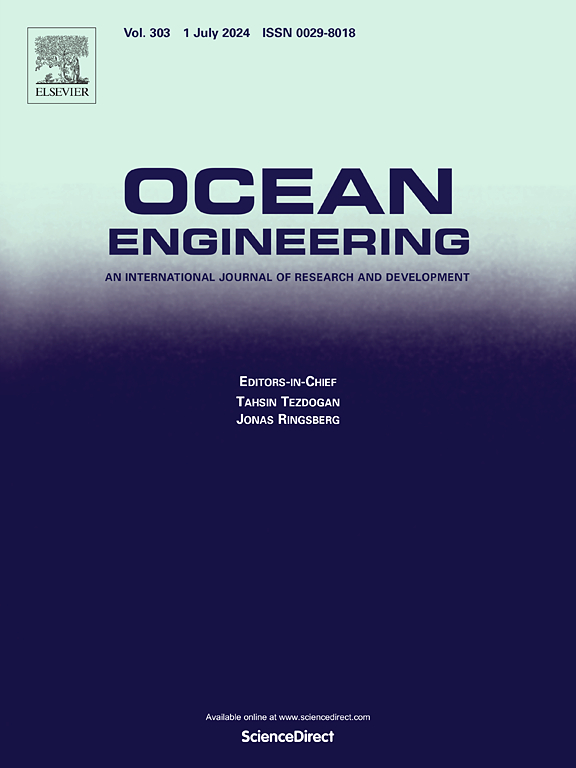Vortex-induced vibrations of variable cross-section CWPs under axially varying tension: Numerical investigation with three flow profiles
IF 5.5
2区 工程技术
Q1 ENGINEERING, CIVIL
引用次数: 0
Abstract
Vortex-induced vibration (VIV) poses significant challenges to the structural reliability of Cold-water pipes (CWPs) in Ocean Thermal Energy Conversion (OTEC) systems, particularly when geometric variation and non-uniform axial tension are present. This study develops a high-fidelity semi-analytical framework that combines the Generalized Integral Transform Technique (GITT) with Sturm-Liouville Eigenvalues Using Theta matrices (SLEUTH) method. To analyze the VIV of CWPs with variable cross-sections under three realistic flow profiles: uniform, linear shear, and exponential shear. Validation against finite element simulations and existing literatures confirms the accuracy of the proposed model. Results demonstrate that while uniform flow produces stable standing-wave responses, linear and exponential shear flows introduce progressive mode transitions, nonlinear mode coupling, and broadened excitation spectra. Notably, exponential shear induces spatially asynchronous vortex shedding and chaotic lock-in behavior, revealing energy transfer from dominant to higher-order modes. These phenomena are strongly influenced by the interplay between velocity gradients and structural heterogeneity. The findings provide critical insights into the physical mechanisms governing VIV and offer design guidance for mitigating fatigue-critical responses in CWPs. This work addresses gaps in the current literature by accounting for coupled geometric-tension-flow effects and proposes a robust computational tool for future engineering optimization of marine energy systems.
轴向变张力下变截面水轮机涡激振动:三种流型的数值研究
涡流诱发振动(VIV)对海洋热能转换(OTEC)系统中冷水管道(CWPs)的结构可靠性提出了重大挑战,特别是当存在几何变化和非均匀轴向张力时。本研究开发了一个高保真半解析框架,结合了广义积分变换技术(git)和Sturm-Liouville特征值使用Theta矩阵(SLEUTH)方法。分析了变截面水轮机在均匀、线性和指数剪切三种实际流型下的涡激振动。对有限元模拟和现有文献的验证证实了所提出模型的准确性。结果表明,均匀流动产生稳定的驻波响应,而线性和指数剪切流动则引入渐进模态转换、非线性模态耦合和展宽的激励谱。值得注意的是,指数剪切诱导了空间异步涡旋脱落和混沌锁定行为,揭示了能量从优势模态向高阶模态的转移。这些现象受到速度梯度和结构非均质性相互作用的强烈影响。该研究结果为控制VIV的物理机制提供了重要见解,并为减轻CWPs的疲劳临界响应提供了设计指导。这项工作通过考虑耦合几何-张力-流动效应来解决当前文献中的空白,并为未来海洋能源系统的工程优化提出了一个强大的计算工具。
本文章由计算机程序翻译,如有差异,请以英文原文为准。
求助全文
约1分钟内获得全文
求助全文
来源期刊

Ocean Engineering
工程技术-工程:大洋
CiteScore
7.30
自引率
34.00%
发文量
2379
审稿时长
8.1 months
期刊介绍:
Ocean Engineering provides a medium for the publication of original research and development work in the field of ocean engineering. Ocean Engineering seeks papers in the following topics.
 求助内容:
求助内容: 应助结果提醒方式:
应助结果提醒方式:


